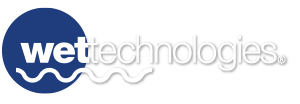Collecting data from sensors to monitor machine performance and product quality is not a new concept. We’re quite familiar with the “stop/start” function that signals when a part is out of place, or a process will be cued. Now, it’s much more than a stop and start scenario. Smaller, more versatile sensors offer opportunities for actionable data to be collected—and missteps corrected—in real time. So you can really hone in on quality control in surface finishing.
Programmable, Practical Data Collection for Machines and Parts
“The IIoT [Industrial Internet of Things] technology available for production facilities now enables direct connections to programmable logic controllers (PLCs) and smart sensors on process equipment and tooling to monitor operating parameters, such as speed, cycle time, temperature, pressure, flow rate, current, and voltage. This makes it feasible and affordable to capture both process and product measurements for each work piece in the overall measurement scheme.”¹
Compared to relays, PLCs are not only more versatile, but also less bulky, easier to use, and more energy efficient. It’s easier to position the sensors. Sensitivity has made great strides as well.
“Higher megapixel cameras, improvements in CMOS technology, better and brighter light sources, and new signal processing algorithms are all factors in creating improved sensors.”²
Proactive Quality Control
We’re not only gathering more information, but also handling it faster. Machines and parts can be monitored in real time, even remotely. Data can be collected continuously. This has tremendous implications for both machine maintenance and quality control.
“…Manufacturers can identify and even predict issues before they become problematic….¹
“…When automated monitoring of process parameters is combined with in-line measurements of product characteristics, the information flow and real-time analytics assures an effective transactional quality management system. …
“…An unexpected payoff is the development of a healthy “let’s decide now” culture where engaged employees are armed with real-time information to manage their operations….
“The introduction of IoT technologies in product design and smart manufacturing has brought the industry to the brink of enabling effective and efficient management of production with virtually perfect quality.”¹
Repeatability, waste reduction, and precision have always been in the Wet Tech wheelhouse. We welcome deeper integration of IIoT technologies to bring finishing processes to levels of perfection beyond what we may have thought possible.
(1) https://www.qualitymag.com/articles/94260-capitalizing-on-the-convergence-of-manufacturing-quality-iot-and-lean
(2) https://www.qualitymag.com/articles/95906-at-the-corner-of-digital-twin-and-perfect-part
(3) https://www.qualitymag.com/articles/95918-taking-flight-aerospace-solutions-allow-accuracy-with-uncompromised-productivity
Aviation Applications
The trend in aviation is toward gathering data on virtually every aspect of every part, end to end, cradle to grave.
“We can do things very quickly with optics … faster than a tactile or contact inspection method. For example, with CT, we can see the internal geometries of a part, our manufacturing processes are becoming so advanced, with what we’re able to make there are endless possibilities….
“Stephanie McCartan of Carl Zeiss Industrial Metrology explains…
‘One of the reasons metrology is so important in aerospace is the very distinct and unique part geometries and assemblies, for example, blades…’
‘The trend has already started for noncontact technologies in aerospace,’ McCartan says. ‘I really see these being pushed and developed further. Some of these might be surface scanning, visual, X-ray technology.’”³
Wet blasting has a proven track record for crack detection. But these advanced technologies have us thinking about other ways in which we can find structural anomalies.
If you’ve got questions about quality control in manufacturing, or checking the integrity of parts, let’s put our heads together and do some testing. Surface finishing may be just the beginning of advanced wet blasting capabilities.








